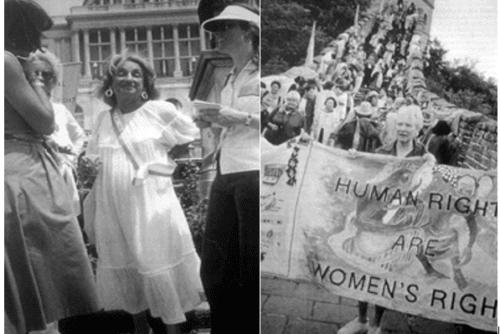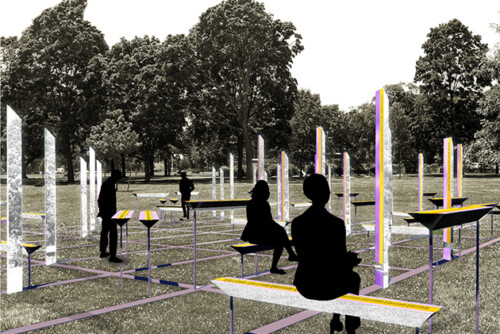Summary
The second panel of the Ingeborg, Tamara & Yonina Rennert Women in Judaism Forum, “Changing Jewish Communities,” explored the incredible diversity, in terms of race, ethnicity, and religiosity, within Jewish communities by gathering Jewish leaders across a wide range of disciplines – philanthropy, education, the arts – to discuss not only how these communities are formed but also how they incorporate or resist change. Paula Hyman, Lucy G. Moses Professor of Modern Jewish History at Yale University, moderated this discussion with panelists:
- Shifra Bronznick, founding president, Advancing Women Professionals and the Jewish Community;
- Sally Gottesman, chair, Moving Traditions;
- Khadijah Miller, assistant professor of interdisciplinary studies, Norfolk University;
- Gina Nahai, author, Cry of the Peacock and Moonlight on the Avenue of Faith.
Professor Hyman opened the discussion by asking how to combat the “weariness” that seemed evident in so many of the remarks during the conference’s opening panel, “particularly among the older members in this conversation.” How are we to move from the utopian expectations of 1970s feminism to a more honest and open assessment of the successes and the failures of feminist struggles within Jewish communities?
Shifra Bronznick described her delight upon “seeing women breaking the barrier of the rabbinate and the cantorate” – a success, to be sure – but the progress of Jewish progressives, she notes, does not necessarily extend beyond religious communities. For while it’s true that women now direct over 50 percent of philanthropic foundations, and that three of eight Ivy League universities currently boast women presidents, none of the largest Jewish federations “have a woman at the helm.” Where are the women in the supposedly progressive bastions of JESNA or Wexner or APAC or the ADL?
To combat this serious lack of representation, Bronznick suggests, we must not allow ourselves to be convinced that one’s identity as a Jew trumps one’s identity as a woman. We must not believe that “focusing on our own little problems, which is how women’s problems are perceived, takes away from a mission-driven zeal to save the world.” We must, in short, make it “our priority to create this change . . . [by] demanding – not requesting – that our organizations embrace our values.” For both Bronznick and Sally Gottesman, the surest method of meeting this demand is a matter of philanthropy, of giving (whether it be one’s time or talents or money) with a “gender lens,” that is, giving only to organizations that share and struggle to realize a feminist agenda.
Gottesman traces women’s invisibility at the highest tiers of the nonprofit sector to the profoundly suggestive, often unconscious ways in which girls are taught about power. Despite the presence of more women in higher stations of religious life, Jewish girls have incredible obstacles to overcome to conceptualize the mere possibility of their eventual leadership. Says Gottesman:
A major error in the Jewish feminist movement in relationship to religion is that we allowed our synagogues to be called egalitarian when this symbol of power [i.e. God] was not egalitarian, when it remained a “He” . . . Liz [Holtzman] spoke last night about why there aren’t more women in Congress. I think we’d have a chance of having more women in Congress if we could talk about God as “She,” and little girls could grow up and . . . see themselves reflected in that.”
Inconsequential as a choice of pronoun might seem, it is language, notes Khadijah Miller, that enables us to define and to actualize our selves in a way that connects us, one to another. “What we call ourselves,” Miller says in explaining her ties to both Jewish and womanist groups, “reflects our community, where the community is and where the community will go.”
Whether that trajectory is progressive or regressive should be a matter of great concern to Jewish communities, for, as Paula Hyman admits:
I wish that I could share, at this moment in time, [feminist historian Estelle Friedman’s] certitude that what feminism accomplished in American society and what we Jewish feminists accomplished within the Jewish community is ineradicable. I do not share that certitude, and I think we all have to be aware of the fact that changes do not necessarily occur in one direction only.
In speaking of the history of Iranian Jews, novelist Gina Nahai charted the meteoric rise of an immigrant population to the highest echelons of American society, but she also spoke of the alarming ease with which a backlash can occur. Perhaps the most disturbing aspect of Nahai’s narrative of an oppressive “intolerance of diversity,” though, is not the ways in which Jews suffered at the hands of non-Jews or women at the hands of men, but rather of the “resistance to [progressive] change . . . on the part of women, on the part of older women [who refused] to allow younger women to so much as complain, much less ask for change.”
To counter this return to conservatism, we need to work to more fully open up leadership positions to feminists who are committed to progressive visions of the world. To do this, in turn, we need, in Shifra Bronznick’s words, to “create a different notion of participation.” Women and men must learn to come together in “shared leadership” that enables them to develop and be motivated by a “genuine curiosity about other people’s reality.” Without a willingness to use our hard-won positions of power and privilege to administer to individuals and communities that lack both, we do little but reenact a history of oppression. To fail to “create new models,” warns Khadijah Miller, is to live in a world where women stand aloft the same troublesomely patriarchal footholds as men. “As feminists,” Shifra Bronznick reminds us, “I don’t think we’re in the women business. I think we’re in the transformation business, and I invite you to join [us] in it.”


